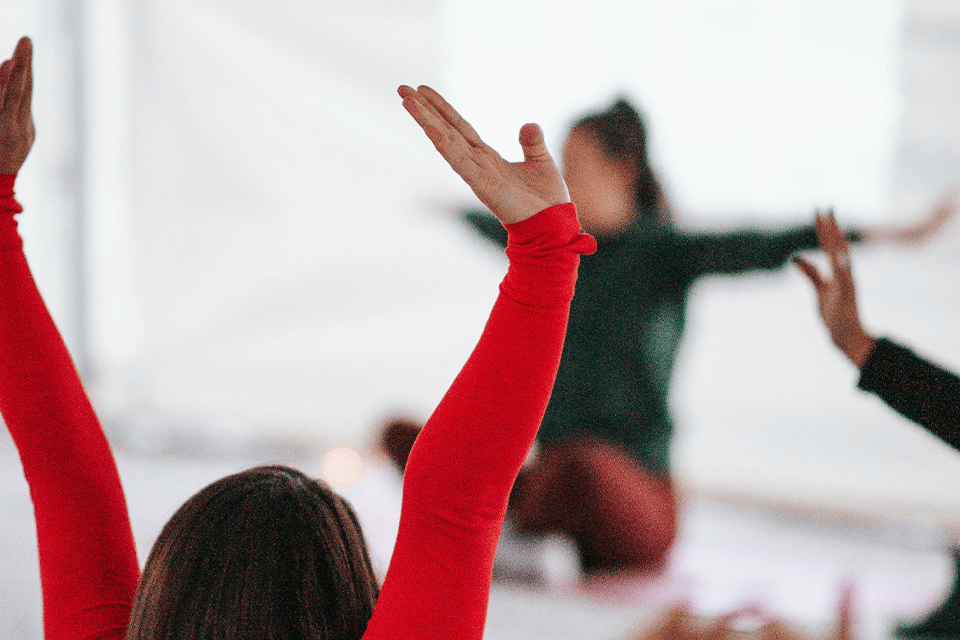Workplace rituals are currently one of those business buzzwords that appeared from seemingly nowhere. But, in reality, it is not something new but a resurgence of an essential element that has been part of our communities through the ages.
Many kinds of rituals have played a part in our progress and have taken many forms. Rituals have been a core part of human culture and society for thousands of years. They serve an essential role in society because they gave us, and still give us, a place to connect, grow, learn, and practice solidarity.
In the workplace, this is true as well. Workplace rituals boost company culture because they make the employees within the company feel more connected to others and the company itself. A workplace is a community of people working towards a common goal, and communities use rituals to stay aligned, improve motivation, and help build rapport.
Examples of Human Rituals

Playing Like a Champion
Perhaps an example of a more appropriate ritual would be where players at Notre Dame slap a sign that reads “Play Like a Champion Today” on their way to the field on match days. This ritual has been in existence for over 25 years. So why is it important?
Lou Holtz was a new coaching team member at Notre Dame in 1986, and on one occasion, he was flicking through an old picture book when he saw a photo of a sign with this now-famous slogan. He loved it so much that he had the campus sign shop make one for him. Then, after it was hung, he told his team that every time they slapped the sign, they had to think back on all the great players that had preceded them and those who had made sacrifices so they could be there. So it was a fantastic way of focusing the mind through a simple action. The players do not have to carry out any complex procedures for this ritual. Instead, they have to slap the sign.
Community
The rituals in the time of the Aztecs we connected to religion and state. This was the community to which they all belonged. These days communities come in many forms. But, of course, we still have the state, and religion is still there, but we also have communities based around a sporting team, and perhaps the one where we spend more of our time than anywhere, the workplace community.
Community in the Workplace
We spend around 33% of our lives at work, and consequently, it is a natural desire that we feel comfortable in that workplace, that it is a supportive and inspiring environment. In recent years many employers have sought to assist employees in building positive workplace communities. These communities help attract the best employees and drive them to want their company to succeed, providing more successful careers and ensuring that personal lives are fulfilled. Unfortunately, this is not just some nice-sounding theory. It has been shown that companies that do not provide a positive community dimension are more likely to have high staff turnover—low employee morale, and toxic relationships.
The foundation of a community within a company is having a strong mission. Employees feel they are striving towards a greater goal when this strong mission exists. The company culture comprises several factors, which include:
- Mission
- Values
- Personal Expectations
- Goals
- Working Environment
Just like the Notre Dame players, our rituals offer a personal warm-up session that will assist us in concentrating on the task at hand. The logical part of our brain tells us that touching a sign has no impact on how we perform, yet the reality is that this kind of ritual works. So they prepare us for activities and help us to engage with the task.
In business, workplace rituals highlight essential aspects of the company and its operations. They help team members to remember and give priority to the best practices.
Declutter The Mind is a meditation app for your workplace to help make your team happier and culture healthier. In an average 9-to-5 work day, just 5 minutes of mindfulness meditation can release stress, improve focus, and boost creativity. For your company, a more mindful team means better workplace culture and teamwork.
Are Rituals and Routines the Same?
Suppose players at Notre Dame slapped the sign solely because they were instructed to do so. This would merely be a routine. However, because there is a belief in what slapping the sign represents, it becomes a ritual. Rituals have a genuine sense of purpose.
In your workplace, tell employees to carry out specific actions (a routine) before carrying out a task. Employees may resent this because they do not understand why it needs to be done and essential. If those same actions are thoroughly explained and shown how they are a necessary part of the company culture and have been proven to produce results, then this is no longer a routine and becomes a ritual as it now feels relevant.
How Do Rituals Transform a Culture Within the Company?
Even what appears to be the silliest workplace rituals become a shared experience and assist in helping employees bond. Research has shown that employees will go that extra mile in this scenario.
The morning coffee run, believe it or not, is a workplace ritual. It sets the scene for the day ahead, as do activities that regularly take place during the lunch break. Going out with the rest of the team for a drink on Friday night also bonds team members.
Forging Unity Through Rituals
Workplace rituals have been proven to establish connections between employees in different departments. They build bridges across generations and other roles. This is expanded in the “Ritual Design: crafting team rituals for meaningful organizational change” report by Kurzat Ozenc and Margaret Hagan.
6 Workplace Rituals to Boost Company Culture

The Walmart 10-foot Rule
Sam Walton, the founder of Walmart, would frequently visit the stores and take time to instill in every employee the importance of excellent customer service. He would explain this in detail and then introduce that employee to the 10-foot rule. It said that if any customer got closer than 10-foot of an associate, they would look the customer in the eye, smile, and ask how they could help.
The 10-foot Rule
This 10-foot rule was just one of the essential rituals within the Walmart culture. Another ritual is that, across the US, Walmart holds around 60,000 staff meetings weekly. Each store also holds three fifteen-minute shift change meetings each day, and in all of these meetings, they have a chant called the Walmart Cheer, which is used to start the meeting. Once again, this ritual is an essential part of the company culture that reminds the staff that the customer comes first.
Blackbaud
This software supplier aimed at the charity sector incorporates service into its culture. The company puts together team service projects (giving time off to staff to participate) and matches any charitable giving by staff. They also organize themed events to add some fun as well.
Fika
A Fika in Sweden is similar to a coffee break, but it is much more about finding time to stop and connect with people. At Configura in Sweden, various teams take turns to prepare the coffee and sweet pastries, and at 3 pm (daily), everything stops. The same company in Grand Rapids has their Fika at 9 am (weekly). It is so instilled into the company that during a lockdown, they held virtual Fikas.
Chorei
Having monthly staff meetings where all staff get together to discuss ideas and progress is nothing new, but in Japan, they do this every day, and all staff members attend. These workplace rituals create unity around company goals and missions, providing an opportunity for all staff members to have a say.
Spain’s Castells
Imagine members of staff getting together to build human towers that may reach ten people high. It needs a great deal of trust in colleagues to attempt that. It is truly amazing how many people choose to take part in this. What does it achieve? It is an excellent exercise in building trust and demonstrates how every single member of a team has a role to play.
Final Thoughts
Most companies may hold workplace rituals commemorating hitting a goal, a retirement, or opening a new branch. These opportunities memorialize essential milestones. Taking this further and developing new and innovative ways to build community is the next level. This is done by creating an environment/culture where those working for the company believe that they are making a contribution that is both meaningful and valued. Using rituals to reinforce value-driven actions is a cornerstone of this process.
Research by Gallup demonstrates that US companies have a long way to go, with only 23% of employees feeling that they can genuinely incorporate their employers’ stated values in their work daily.
This is because companies who set these values do not take the next step: providing workplace rituals that allow their employees to connect with them.







